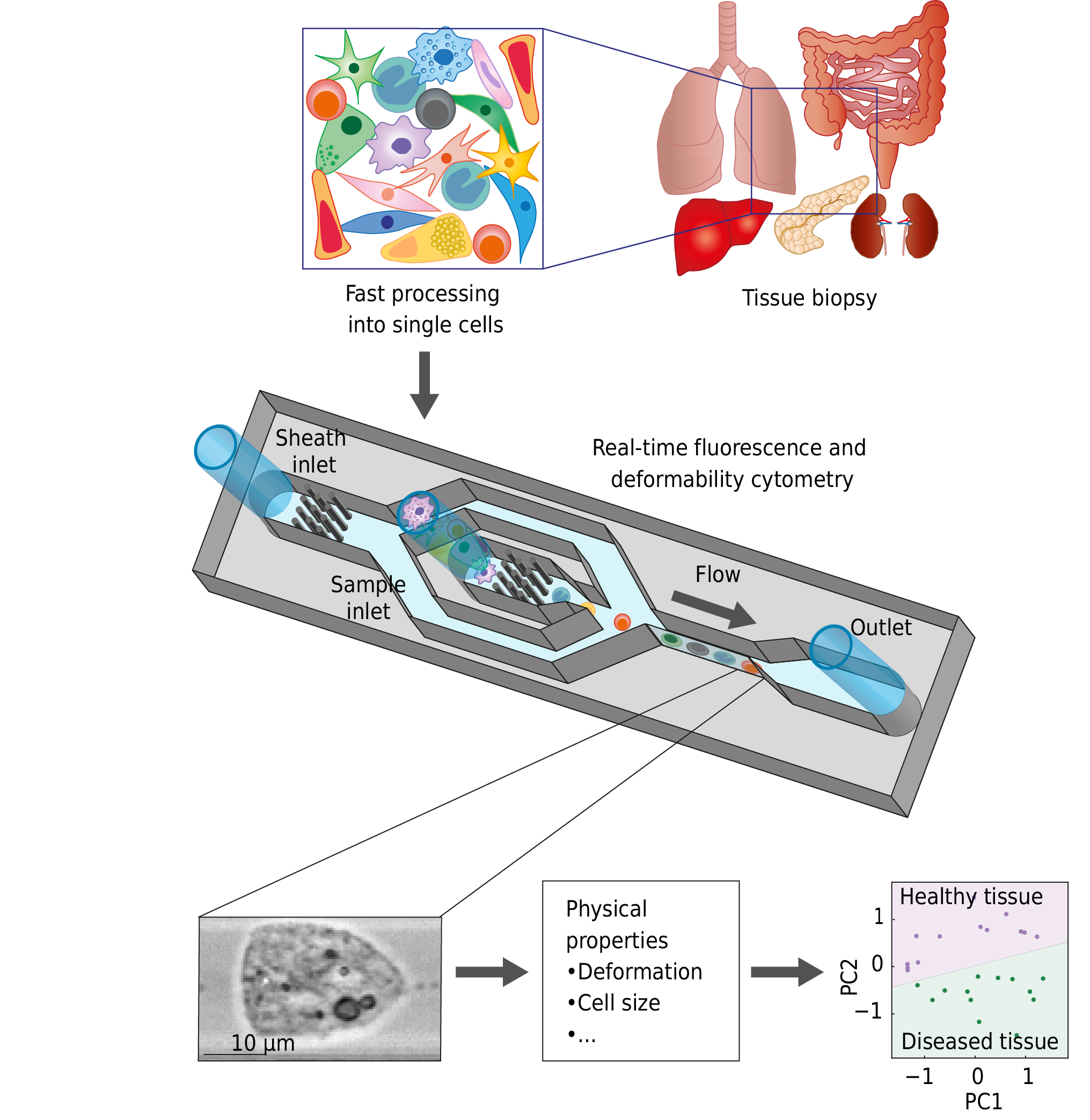Tumour biopsy diagnostics using physical phenotyping of cells from tissues - new article out in Nature Biomedical Engineering
2023-02-09In this article published in Nature Biomedical Engineering, Soteriou and Kubankova et al. demonstrate the potential of physical phenotyping of cells for tumour biopsy diagnostics. With this approach, the physical phenotypes of singularised suspended cells dissociated from the tissue biopsy samples are analysed within 30 minutes. This sets the grounds for a new alternative to histopathological consultation during surgery, reducing time, labour and costs spent.
Read the original article in Nature Biomedical Engineering and the MPL Press release.
With the new approach, biopsy samples can be analysed within 30 minutes by sequentially assessing the physical phenotypes of singularised suspended cells dissociated from the tissues. This sets the grounds for a new alternative to histopathological consultation during surgery, circumventing the current downsides of the current approach which is demanding in time, labour and costs, and requires the expertise of trained pathologists.
The diagnostic approach combines the enzyme-free mechanical dissociation of tissues, deformability cytometry at rates of 100-1,000 cells per second, and data analysis by machine learning, namely unsupervised dimensionality reduction and logistic regression. In the study, the new approach was used to quantify the degree of colon inflammation and to accurately discriminate healthy and tumorous tissue in biopsy samples of mouse and human colons. In the future, this fast and label-free diagnostic approach may aid the intraoperative detection of pathological changes in solid biopsies.

Physical phenotyping of cells from tissue biopsies. Adapted from: Soteriou and Kubankova et
al,
Nature Biomed Eng (2023),
adapted from figure 1 of the original article,
licensed CC-BY 4.0.
